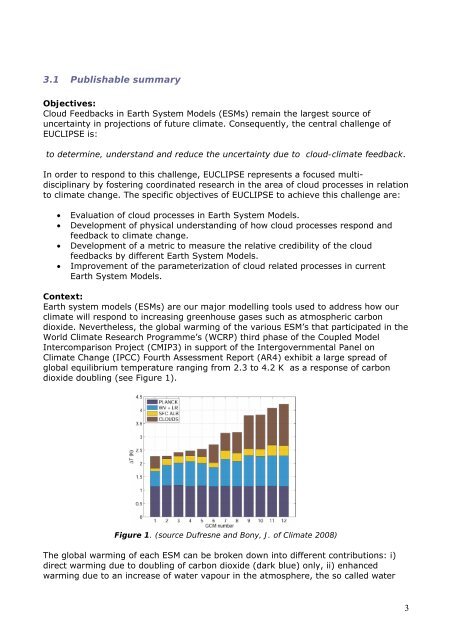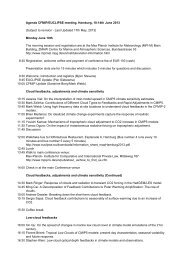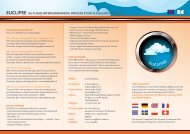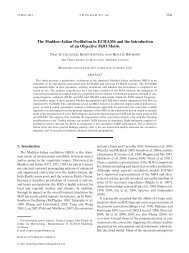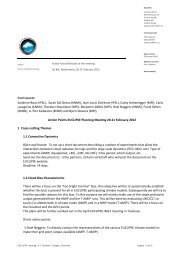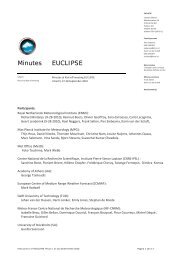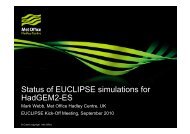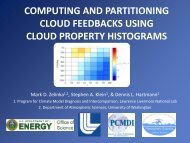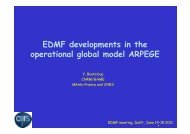EUCLIPSE First Period Report
EUCLIPSE First Period Report
EUCLIPSE First Period Report
Create successful ePaper yourself
Turn your PDF publications into a flip-book with our unique Google optimized e-Paper software.
3.1 Publishable summary<br />
Objectives:<br />
Cloud Feedbacks in Earth System Models (ESMs) remain the largest source of<br />
uncertainty in projections of future climate. Consequently, the central challenge of<br />
<strong>EUCLIPSE</strong> is:<br />
to determine, understand and reduce the uncertainty due to cloud-climate feedback.<br />
In order to respond to this challenge, <strong>EUCLIPSE</strong> represents a focused multidisciplinary<br />
by fostering coordinated research in the area of cloud processes in relation<br />
to climate change. The specific objectives of <strong>EUCLIPSE</strong> to achieve this challenge are:<br />
• Evaluation of cloud processes in Earth System Models.<br />
• Development of physical understanding of how cloud processes respond and<br />
feedback to climate change.<br />
• Development of a metric to measure the relative credibility of the cloud<br />
feedbacks by different Earth System Models.<br />
• Improvement of the parameterization of cloud related processes in current<br />
Earth System Models.<br />
Context:<br />
Earth system models (ESMs) are our major modelling tools used to address how our<br />
climate will respond to increasing greenhouse gases such as atmospheric carbon<br />
dioxide. Nevertheless, the global warming of the various ESM’s that participated in the<br />
World Climate Research Programme’s (WCRP) third phase of the Coupled Model<br />
Intercomparison Project (CMIP3) in support of the Intergovernmental Panel on<br />
Climate Change (IPCC) Fourth Assessment <strong>Report</strong> (AR4) exhibit a large spread of<br />
global equilibrium temperature ranging from 2.3 to 4.2 K as a response of carbon<br />
dioxide doubling (see Figure 1).<br />
Figure 1. (source Dufresne and Bony, J. of Climate 2008)<br />
The global warming of each ESM can be broken down into different contributions: i)<br />
direct warming due to doubling of carbon dioxide (dark blue) only, ii) enhanced<br />
warming due to an increase of water vapour in the atmosphere, the so called water<br />
3


